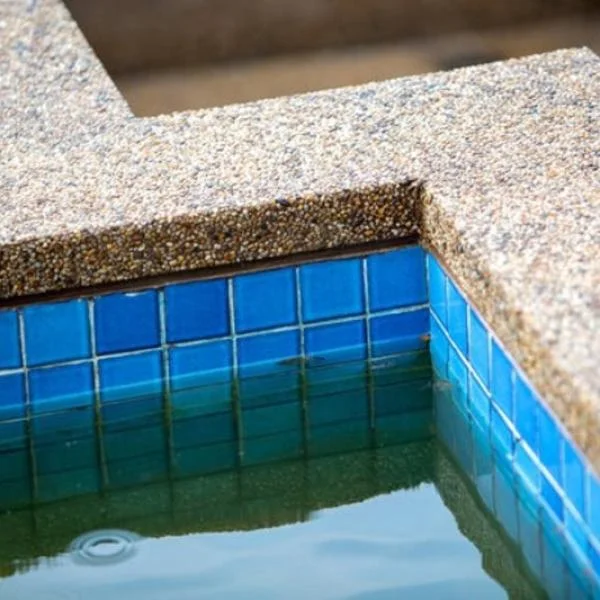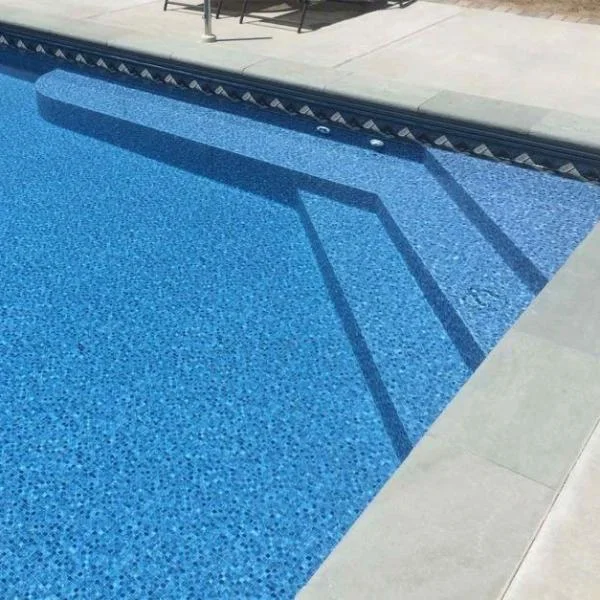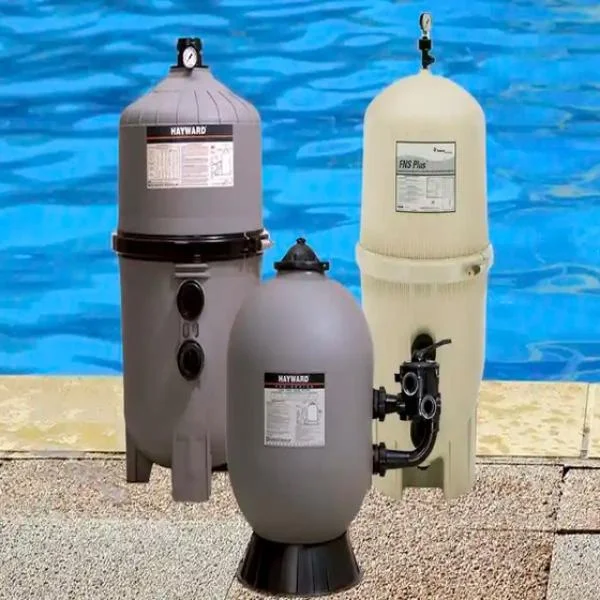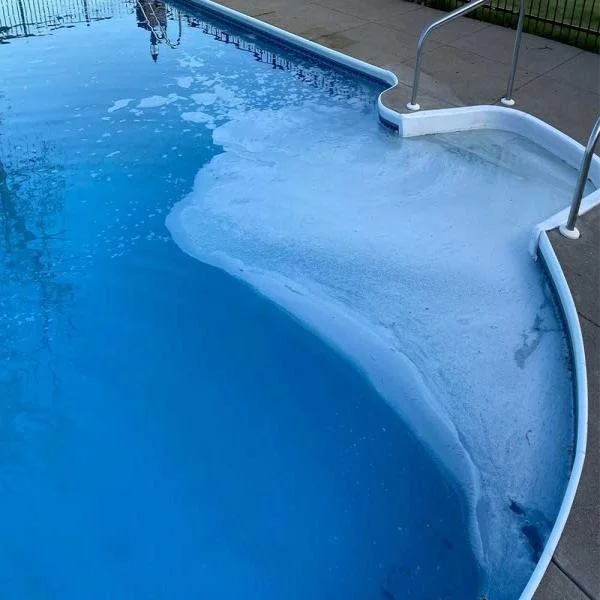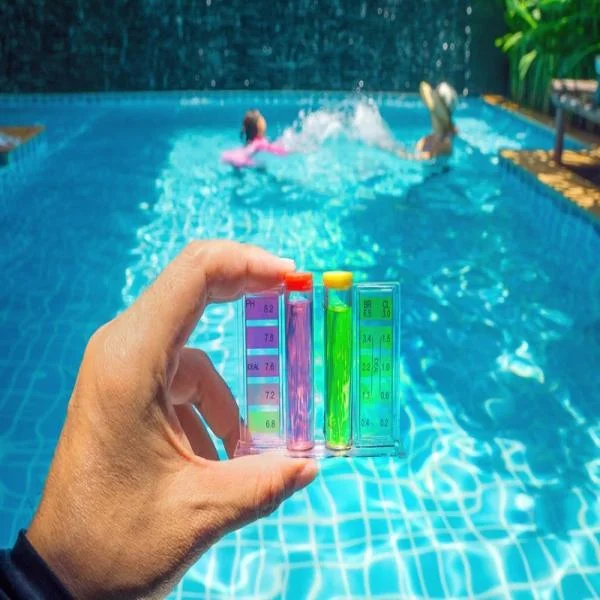
A pool water color blue pool is every pool owner’s dream. However, maintaining that crystal-clear water isn’t always easy and sometimes, you may notice that the pool water color changes. Understanding the cause of these color changes is the first step in keeping your pool water clean and healthy. In this article, we will discuss the various reasons for pool water color discoloration, what these colors mean, and how to resolve the issue of maintaining a swimming pool.
What Causes Change to Pool Water Color?
Several factors can influence pool water color, including chemical imbalances, metal contamination, algae growth, and even the water source. The color of your pool water can be a warning sign that something is off, whether it’s an issue with water chemistry, contaminants, or organic matter. Here are the most common causes of discolored pool water:
Chemical Imbalance
The most common reason for changes in pool water color is an imbalance in the chemicals used to sanitize and maintain the pool. When chlorine, pH, or alkalinity levels are too high or too low, the water can change color, giving your pool an unsightly appearance.
- Green water typically indicates algae growth, which occurs when the chlorine level is too low or the pH is imbalanced.
- Cloudy or milky water may be a sign of improper pH or alkalinity levels, causing calcium deposits and other particles to form in the water.

Metal Contamination
Metals such as iron, copper, and manganese can seep into your pool water, often from the water supply or through equipment corrosion. These metals can oxidize and cause noticeable color changes in your pool.
- Greenish-blue water is often caused by high levels of copper, which can oxidize and tint the water.
- Brown or rust-colored water typically indicates the presence of iron, especially when it reacts with chlorine.
- Black or purple water can occur when manganese is present in the water, leading to deep discoloration.
Algae Growth
Algae are one of the most frequent causes of pool water turning green or even yellow. Algae can grow in pool water when the chlorine level is not properly maintained. Once algae start growing, they can spread quickly, resulting in murky, discolored water.
- Green water is the most common sign of algae, indicating either green or blue-green algae blooms.
- Mustard-colored water often indicates the presence of yellow or mustard algae, which can cling to pool surfaces and be resistant to chlorine.
Organic Matter and Debris
Leaves, dirt, and other organic debris can find their way into your pool and contribute to water discoloration. As organic matter decomposes, it releases compounds that can cloud or darken the pool water. Cloudy or murky water often indicates a build-up of debris that needs to be removed by cleaning the pool and running the filtration system.

Water Source
Sometimes the water source itself can affect the pool water color. If your pool is filled with well water or other untreated water, it may already contain minerals and metals that can cause discoloration. It’s essential to test the water before adding it to your pool to ensure there are no unwanted contaminants.
The Meaning of Pool Water Color
Once you notice a pool water color change, it’s crucial to identify the type of discoloration to determine the cause and the best solution. Here are some of the most common pool water colors and what they mean:
Green Pool Water
Green water is often associated with algae growth, but it can also be caused by metals like copper reacting with chlorine. Algae thrive in pools with low chlorine levels and imbalanced pH, so keeping your chemical levels in check is essential to prevent green water.
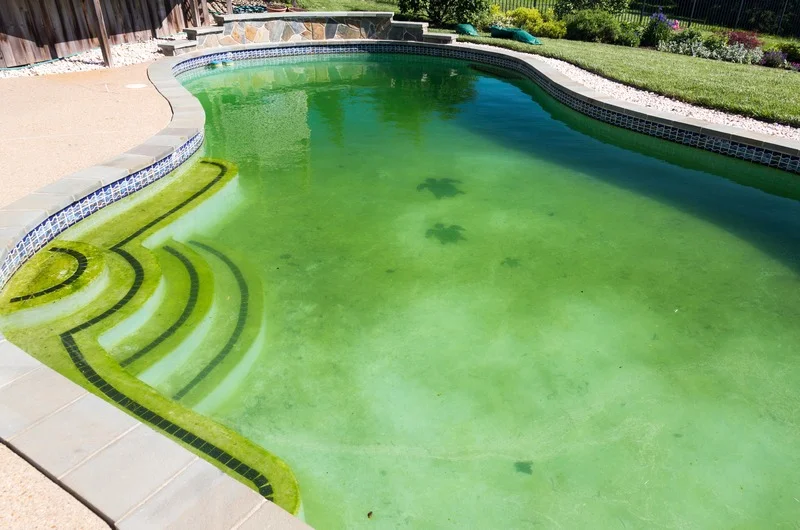
Solution: Shock your pool with a high dose of chlorine to kill off the algae and clean your pool filters. Additionally, use an algaecide to prevent future outbreaks.
Brown or Rust-Colored Water
Brown or rust-colored water usually indicates the presence of iron in your pool. When iron oxidizes in chlorine, it can turn the water an unattractive brown color. This often happens if your water source contains iron, such as well water, or if metal parts of the pool's system corrode.
Solution: Use a metal sequestrant or metal remover designed for pool water. You may also need to clean or replace metal parts to prevent contamination.
Yellow or Mustard-Colored Water
Yellow or mustard-colored water is often a sign of mustard algae, which is more resistant to chlorine than typical green algae. This type of algae tends to cling to pool walls and surfaces, making it difficult to remove.
Solution: Brush the walls and floor of your pool to loosen the algae, then shock the pool with a strong dose of chlorine. Use a mustard algae-specific algaecide to ensure complete eradication.
Cloudy or Milky Water
Cloudy pool water can be caused by a variety of issues, including poor filtration, high levels of calcium, or a chemical imbalance. Particles from debris or dead algae may also be floating in the water, giving it a murky appearance.
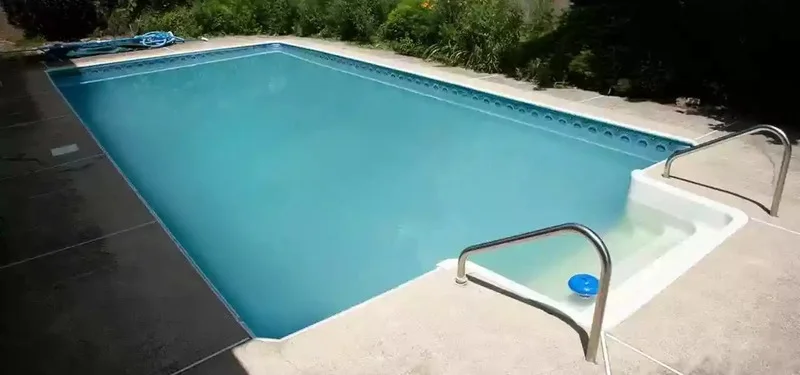
Solution: Test and balance your pool’s chemical levels, paying particular attention to pH and calcium hardness. Clean your filters and vacuum the pool to remove floating debris or particles.
Bluish-Green Water
A bluish-green tint often indicates the presence of copper in your pool water. Copper can come from the water source or corroded pool equipment. When oxidized, it causes the water to take on a blue or green tint.
Solution: Use a metal remover or sequestrant to treat the water and remove excess copper. You may also need to clean or replace corroded parts in your pool’s system.
How to Prevent Discoloration in Pool Water
Maintaining the right balance of chemicals and keeping your pool clean is key to preventing pool water discoloration. Here are some essential tips to keep your pool water color clear and beautiful:
- Regular Testing: Test your pool water regularly to ensure that chlorine, pH, and alkalinity levels are balanced. This helps to prevent the growth of algae and keeps metals from reacting with chlorine.
- Use a Pool Cover: A pool cover can help keep out debris and reduce the amount of organic matter that enters your pool. This prevents discoloration caused by decaying leaves and dirt.
- Filtration System Maintenance: Make sure your pool’s filtration system is working correctly by cleaning or replacing filters as needed. A clean filter ensures that particles and contaminants are effectively removed from the water.
- Use Metal Sequestrants: If you have metals in your pool water, using a metal sequestrant can help to bind and remove them before they cause discoloration.
Conclusion
In summary, Dong A has shared with readers the most essential knowledge about methods to pool water color. By understanding what causes changes in pool water color and how to address them, you can keep your pool looking clear and inviting all year round. Whether you're dealing with algae, metals, or debris, taking the right steps to correct the issue will help you enjoy a sparkling, healthy swimming pool.
If you need more references about our water treatment products, please go to the official website of Dong A Chemical at dongachem.com or call a hotline (+84) 985797941 to receive advice and support from the experienced consultant.
Related Articles
How to Clean Pool Tiles: Remove Calcium Deposition, Stains, and Algae
Keeping clean pool tiles is essential for maintaining your swimming pool's appearance and ...
The Best Ways to Clean a Pool Liner and Prevent Stains
A clean pool liner is essential for maintaining a crystal clear and safe swimming pool. Over time, ...
When and How to Clean a Pool Filter for Optimal Performance
A clean pool filter is essential for maintaining clear water and working hard to remove dirt, ...
Why Is Foam in Pool Water? Causes and Solutions
Contaminants create foam in pool water and tend to stick around, causing your pool an unattractive, ...
Why Pool Water pH Important and How to Maintain It
Maintaining the correct pool water pH level is crucial for the safety of swimmers, the longevity of ...
Everything About Ozone Pool Systems Need to Know
Ozone plays an important role in protecting us from the sun, but did you know it can also protect ...

